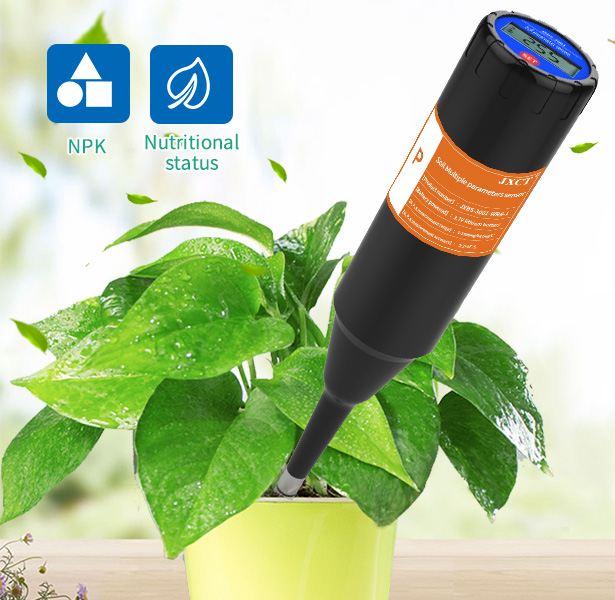Nutrient management plays a vital role in agricultural productivity, as the availability and balance of essential nutrients directly impact crop growth and yield. Traditionally, nutrient management in agriculture has relied on generalized approaches and assumptions. However, recent advancements in soil sensor technologies have opened up new possibilities for precise and targeted nutrient management. In this article, we will explore the innovative use of soil sensors in improving nutrient management, unlocking the secrets hidden beneath the soil for optimal crop nutrition.
The Importance of Nutrient Management:
Proper nutrient management is crucial for plant growth and development. Essential nutrients, such as nitrogen (N), phosphorus (P), and potassium (K), along with secondary and micronutrients, must be available in adequate quantities, as deficiencies or excesses can lead to reduced yields, poor crop quality, and environmental pollution. Soil sensors revolutionize nutrient management by providing real-time data on nutrient levels, enabling farmers to make informed decisions and tailor fertilizer applications based on the specific needs of their crops.

Accurate Nutrient Monitoring:
Soil sensors provide accurate and timely information about nutrient levels in the soil. These sensors utilize various technologies, such as electrochemical, spectroscopic, and optical methods, to measure nutrient concentrations. By placing soil sensors at different depths and locations within the field, farmers can gather comprehensive data on spatial nutrient distribution. This data-driven approach helps identify nutrient-rich and nutrient-deficient areas, allowing for targeted interventions and avoiding unnecessary fertilizer use. Accurate nutrient monitoring also prevents over-application, reducing costs and minimizing environmental impacts.
Site-Specific Nutrient Application:
Soil sensors enable site-specific nutrient application, a practice referred to as variable rate application (VRA). With VRA, farmers can apply fertilizers at customized rates based on the nutrient requirements of different areas within a field. By using soil sensors to map nutrient variability, farmers can create prescription maps and employ precision application technologies, such as variable rate spreaders or sprayers. This targeted approach optimizes nutrient distribution, reduces wastage, and ensures that crops receive the precise amount of nutrients they require, resulting in improved crop health and increased yields.
Monitoring Nutrient Interactions:
Soil sensors not only provide information on individual nutrient levels but also help monitor nutrient interactions within the soil. For instance, soil pH significantly affects nutrient availability to plants. Some soil sensors measure pH levels alongside nutrient concentrations, enabling farmers to understand how pH influences nutrient uptake. Additionally, certain sensors can assess cation exchange capacity (CEC), a measure of the soil's ability to retain and exchange nutrients. By monitoring nutrient interactions, farmers can make informed decisions on soil amendments, soil conditioners, or changes in irrigation practices to optimize nutrient uptake by crops.
Minimizing Environmental Impact:
One of the key benefits of soil sensor innovations in nutrient management is their potential for reducing environmental impact. By providing precise information on nutrient availability, soil sensors enable farmers to avoid excessive fertilizer use, minimizing nutrient runoff into water bodies. Nutrient runoff is a significant contributor to water pollution, causing eutrophication and harming aquatic ecosystems. With soil sensors, farmers can take proactive measures to prevent nutrient losses, protect water resources, and ensure sustainable agricultural practices.
Data-Driven Decision Making and Integration:
The data collected by soil sensors facilitates data-driven decision making in nutrient management. Farmers can analyze historical trends, compare nutrient levels across different seasons, and identify patterns that guide future fertilization strategies. Moreover, soil sensor data can be integrated with other agricultural technologies, such as weather forecasts, crop models, and remote sensing data from satellites or drones. This integration improves the overall understanding of crop nutrition and allows for dynamic adjustments in fertilizer application based on changing environmental conditions.
Conclusion:
Soil sensor innovations have revolutionized nutrient management in agriculture. By unlocking the secrets hidden beneath the soil, these sensors enable precise and targeted application of nutrients, optimizing crop nutrition while minimizing environmental impacts. Accurate nutrient monitoring, site-specific nutrient application, and monitoring nutrient interactions contribute to improved crop health, increased yields, and sustainable agricultural practices. As technology continues to advance, soi






